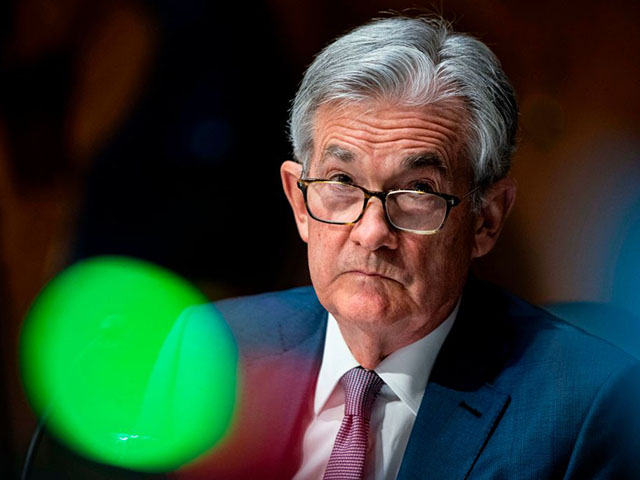Federal Reserve Chairman Jerome Powell said the central bank will keep monetary policy “patiently accommodative” even if prices jump later this year and urged lawmakers not to worry about budget deficits until the economy fully recovers.
“Despite the surprising speed of recovery early on, we are still very far from a strong labor market whose benefits are broadly shared,” Powell said Wednesday in a speech to the Economic Club of New York.
Powell said an expansive fiscal policy is an “essential tool” for restoring the labor market.
“Given the number of people who have lost their jobs and the likelihood that some will struggle to find work in the post-pandemic economy, achieving and sustaining maximum employment will require more than supportive monetary policy. It will require a society-wide commitment, with contributions from across government and the private sector,” Powell said. “The potential benefits of investing in our nation’s workforce are immense.”
Powell’s remarks came as lawmakers consider the Biden administration’s proposal for a $1.9 trillion pandemic relief spending bill. Critics of the proposal—including leading liberal economists Larry Summers and Olivier Blanchard—have said the proposed spending is too high and risks triggering inflation.
In stark contrast, Powell downplayed the risk of inflation from too much deficit spending. He said that prices could rise if demand surged as the economy reopened but this would be a temporary event that would not cause the Fed to raise rates or result in sustained inflation.
Powell praised the progress made during the pre-pandemic Trump era, although he did not credit the Trump administration for the labor market’s strength.
Fortunately, the participation rate after 2015 consistently outperformed expectations, and by the beginning of 2020, the prime-age participation rate had fully reversed its decline from the 2008-to-2015 period. Moreover, gains in participation were concentrated among people without a college degree. Given that U.S. labor force participation has lagged relative to other advanced economy nations, this progress was especially welcome.
As I mentioned, we also saw faster wage growth for low earners once the labor market had strengthened sufficiently. Nearly six years into the recovery, wage growth for the lowest earning quartile had been persistently modest and well below the pace enjoyed by other workers. At the tipping point of 2015, however, as the labor market continued to strengthen, the trend reversed, with wage growth for the lowest quartile consistently and significantly exceeding that of other workers.
At the end of 2015, the Black unemployment rate was still quite elevated, at 9 percent, despite the relatively low overall unemployment rate. But that disparity too began to shrink; as the expansion continued beyond 2015, Black unemployment reached a historic low of 5.2 percent, and the gap between Black and white unemployment rates was the narrowest since 1972, when data on unemployment by race started to be collected. Black unemployment has tended to rise more than overall unemployment in recessions but also to fall more quickly in expansions.4 Over the course of a long expansion, these persistent disparities can decline significantly, but, without policies to address their underlying causes, they may increase again when the economy ultimately turns down.
These late-breaking improvements in the labor market did not result in unwanted upward pressures on inflation, as might have been expected; in fact, inflation did not even rise to 2 percent on a sustained basis. There was every reason to expect that the labor market could have strengthened even further without causing a worrisome increase in inflation were it not for the onset of the pandemic.
The Fed chief painted a dour picture of the current labor market, saying that the unemployment rate is probably closer to 10 percent than the 6.4 percent in official figures. He said misclassification of some workers as employed and people dropping out of the labor force has led headline unemployment figures that “dramatically understated” the economic damage of the pandemic.
